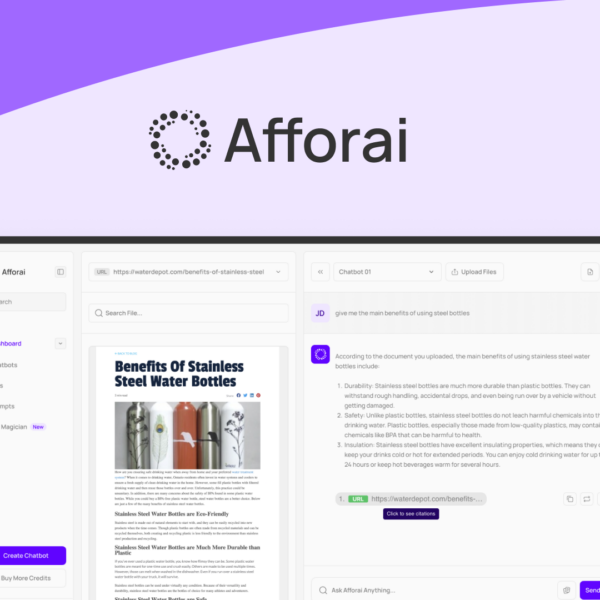SaaS products can be game-changers for businesses, but are you choosing wisely? Dive into these five essential checks that will ensure you snag the best lifetime deals while avoiding costly mistakes.
Research the Developer and Company
When you start considering a SaaS product, it’s important to research the developer and the company behind it. Knowing who created the software can give you insights into its reliability. Look for a company with a solid history and good reputation. Check how long they have been in business and what other products they offer.
Check Reviews and Ratings
Reviews from other users can tell you a lot about the company’s services. Read what people say on review sites and forums. Pay attention to both positive and negative feedback. Look for patterns that show you what to expect.
Understand the Company’s Values
Find out what the company stands for. They should be open about their mission, vision, and work ethics. A company that prioritizes customer satisfaction is more likely to provide good support and updates.
Analyze Their Track Record
Check if they regularly update their software. Frequent updates can indicate that the company cares about improving the product. Also, look at how they handle issues that come up. Good companies respond quickly to bugs or problems.
Look for Supporting Community
A strong community around the product can be a great sign. Check if there are forums, groups, or social media pages where users share tips. This can help you solve problems and learn more about the software.
Doing this research helps you decide if a SaaS product is right for you. You want to invest in a solution that is backed by a trustworthy company.
Analyze Recent Feature Releases

One important step when considering a SaaS product is to analyze recent feature releases. This shows how active the developers are. Regular updates mean the software is improving and staying relevant.
Look for Update History
Check the company’s website or release notes. This information will tell you what features have been recently added. It also shows their commitment to making the product better.
Evaluate New Features
When new features are introduced, think about how they benefit users. Are they solving real problems? Useful features can make your work easier and save time.
Community Feedback on Features
See what users say about the new features. Communication in forums or social media can give you insights. Positive feedback can indicate that the updates are valuable.
Timeliness of Releases
Note how often updates are rolled out. Frequent updates indicate that the company is responsive to user needs. If features are added quickly, it shows they listen to feedback.
Comparing with Competitors
Look at how this product’s features stack up against competitors. Analyzing other products can reveal strengths and weaknesses. This helps you decide if the software meets your needs better than alternatives.
Review the Product Roadmap
When choosing a SaaS product, it’s wise to review the product roadmap. This roadmap shows you what’s planned for the future of the software. It gives you a clear picture of the company’s direction and priorities.
Understanding the Importance of Roadmaps
A product roadmap outlines upcoming features and updates. This helps you see if the tool will meet your long-term needs. It’s like a guide to where the software is headed.
Assess the Timeline
Take note of the timelines mentioned in the roadmap. Are updates planned for the near future? Timely updates are crucial for keeping the software useful and relevant.
Key Features to Look For
Check which features are highlighted. Are they things you need? Knowing what’s coming can help you decide if this product fits your plans.
Company Commitment
A clear roadmap shows the company’s commitment to improvement. If they have a detailed plan, it suggests they are serious about enhancing the user experience.
Feedback Opportunities
Some companies allow users to give feedback on the roadmap. This is a sign that they value input. Engaging users in the development process can lead to better solutions.
Engage with Customer Support

Engaging with customer support is crucial when using a SaaS product. Good support can make your experience much smoother. You should know how to reach them easily and what help they offer.
Know Your Support Options
First, check what support channels are available. Many companies offer email, chat, and phone support. Decide which method works best for you.
Ask Questions Early
If you have questions, don’t hesitate to ask early on. Getting answers right away can save you time and prevent confusion later. Most support teams are ready to help.
Response Time Matters
Pay attention to how quickly customer support replies. Fast responses usually mean better customer service. Check user reviews to see if others mentioned response times.
Feedback is Important
When you connect with support, give feedback. Let them know if they helped you or if there were issues. Good companies will appreciate your input and use it to improve.
Community Support
Look for user forums and online communities too. Sometimes, other users can answer questions just as quickly. Engaging with the community can also provide tips and tricks for using the software.
Evaluate Current or Upcoming Needs
It’s essential to evaluate your current or upcoming needs when choosing a SaaS product. Understanding what you need now and in the future helps you make the right choice.
Identify Your Goals
Start by thinking about your goals. What tasks do you want to improve? Clear goals make it easier to pick a product that fits your needs.
Assess Your Team’s Skills
Consider your team’s skills and comfort level with new software. If your team struggles with tech, choose a user-friendly platform. Training can also add time and costs.
Think About Scalability
Look for software that grows with you. As your business expands, your needs will change. Make sure the SaaS solution can adapt and include features you might need later.
Budget for the Future
Your budget is important too. Consider how much you can spend now and in the future. Make sure the product has a cost structure that fits your budget.
Consult with Your Team
Involve your team in the decision-making process. Get their opinions on what features matter most to them. Their input can guide you in choosing the best option.




